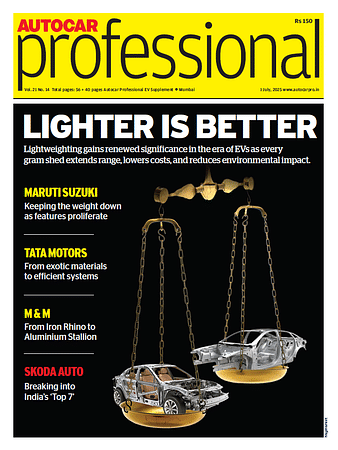Battery recycling: A balancing act
Shubham Vishvakarma of Metastable Materials examines the benefits and challenges of integrated carbothermal reduction in battery recycling.
Battery recycling is a key part of today's sustainability efforts, but it's not without its challenges. Current methods work well for large-scale operations but struggle to handle the complexities of lithium-ion batteries (LIBs) cost-effectively. These batteries, crucial for electric vehicles (EVs), contain hazardous materials that can harm the environment if not disposed of properly.
Recycling them not only reduces environmental risks but also allows us to reuse valuable resources like lithium, cobalt, and nickel. New recycling solutions are trying to strike a balance between cost-effectiveness and environmental responsibility.
The Integrated Carbothermal Reduction (ICR) process is a fresh take on battery recycling. It borrows ideas from mineral processing to treat battery waste. By focusing on the physical properties of minerals to extract them from batteries, ICR avoids using chemicals – a common feature in traditional recycling methods. This approach to extracting critical minerals from LIBs tends to have a much smaller environmental footprint.
Advantages of ICR
Existing industry methods face significant economic and environmental hurdles. They're hard to scale up, expensive, energy-intensive, and often produce toxic waste due to their reliance on chemicals. ICR offers several benefits that sidestep these issues:
- It's versatile, handling a mix of different battery types and extracting critical minerals with high efficiency – up to 99% from some materials. This beats the roughly 95% yield of traditional hydrometallurgical processes.
- ICR treats batteries like mountains of ore, embracing the idea of "waste as ore." It doesn't use chemicals to break down batteries, just as one wouldn't use chemicals to break down actual mountains of ore. This allows ICR to process large quantities effectively using appropriate machinery.
- The lack of chemicals in ICR simplifies operations. It doesn't produce hazardous waste and significantly reduces greenhouse gas emissions. It can also run multiple recycling cycles to improve yield purity, likely using less energy in the process.
- The technology uses a zero liquid discharge system, which greatly reduces water usage and simplifies health and safety management.
- The recycled products – aluminum, copper, lithium carbonate, and nickel-cobalt – are commodities with established markets. These materials can be used in various industries, from construction to electronics and energy storage, supporting a circular economy and reducing the need for new raw materials.
Challenges:
Despite its many benefits, ICR faces some hurdles. It's difficult to set up smaller scale units because the technology needs to process about at least or a minimum 1500 tonnes to be economically viable per year. Also, if batteries are chemically bonded during manufacturing, ICR's physical approach might struggle to break them down without accommodating use of chemicals. The lack of standardization in battery production could also pose problems for the process.
ICR's Pioneering Role:
By adopting ICR early, the company is positioning itself as an innovator in battery recycling. While being a pioneer comes with uncertainties, they've shown that ICR is scalable and safe at the pilot level. It's crucial to raise awareness about the technology's potential for large-scale adoption globally. Navigating regulations without established benchmarks remains a challenge. At the heart of this technology is the idea of a circular economy, where we keep resources in use as long as possible through recycling and reuse.
ICR redefines recycling as mineral extraction rather than waste management. While the process is straightforward, setting up a successful plant and consistently achieving high purity and yield requires expertise in metallurgy and mechanics. The high purity of recycled materials meets commodity standards, offering clear economic benefits and the potential for a closed-loop mineral cycle. However, new partnerships need to be formed within the metal refining industry and with battery manufacturers to ensure acceptance of this closed-loop mindset and the end products.
ICR offers a simple yet game-changing approach to battery recycling, balancing environmental protection with economic viability. Metastable Materials' venture into this field highlights the potential for sustainable innovation in resource recovery.
Shubham Vishvakarma is the Founder and Chief of Process Engineering at Metastable Materials. Views are his own.
RELATED ARTICLES
Indian Automotive Dealerships Focus on Data-Driven Strategies to Navigate Market Challenges
Industry executives outline four key approaches including technology adoption, inventory management, geographic expansio...
Skateboard EVs and Conversion Architectures: Navigating India’s Electrified Future with Flexible Platforms
Industry experts advocate for adaptable platform strategies combining ICE conversions and skateboard designs to meet div...
Agentic AI Systems: Building Autonomous Solutions
Advanced artificial intelligence agents show capacity for adaptive responses in vehicles, aerospace, and infrastructure ...





 05 Aug 2024
05 Aug 2024
 7855 Views
7855 Views





 Angitha Suresh
Angitha Suresh




